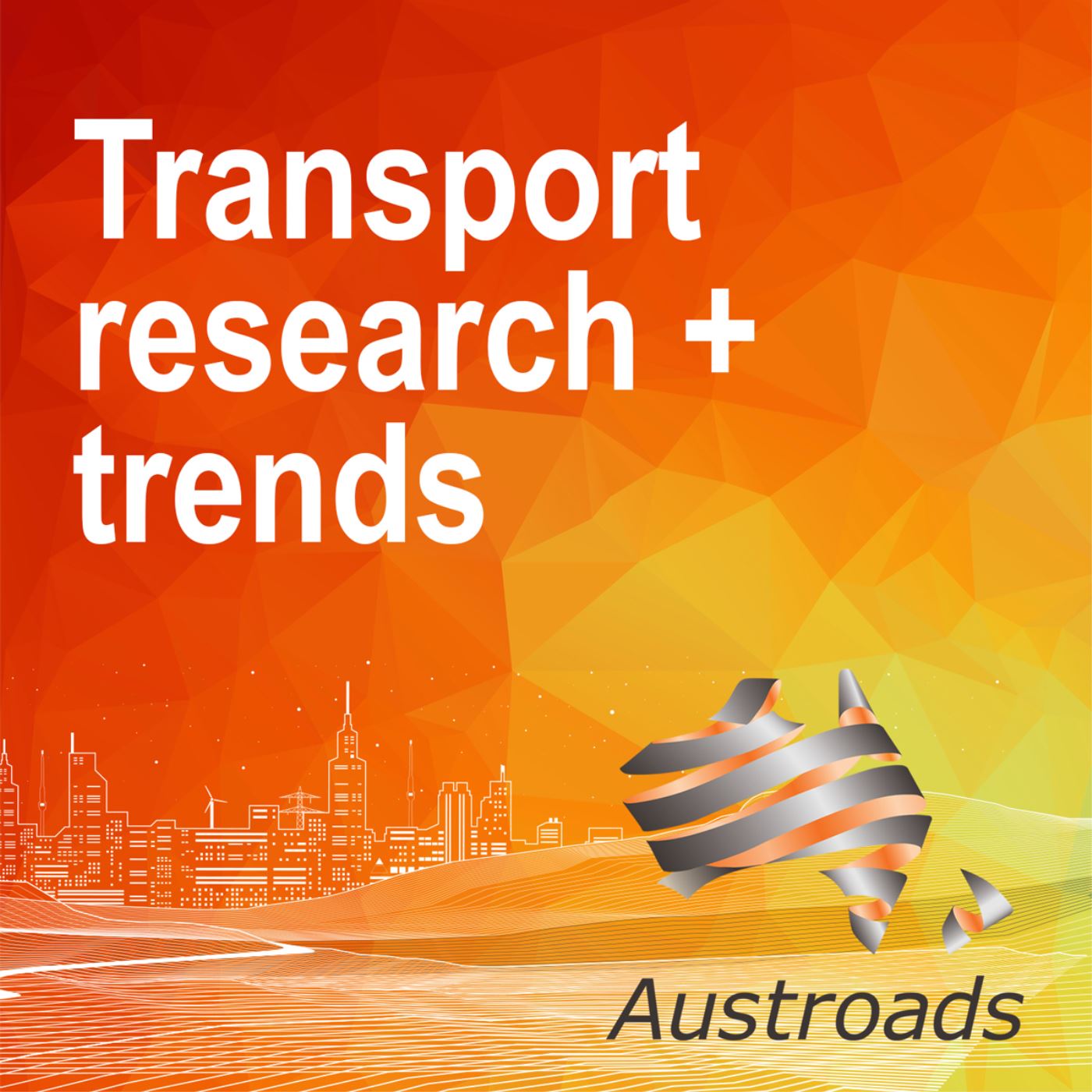Episodes

Tuesday Jul 08, 2025
eCall: Possible Approaches to Australia and New Zealand
Tuesday Jul 08, 2025
Tuesday Jul 08, 2025
Automatic Crash Notification (ACN) systems, such as eCall, automatically notifies emergency services in the event of a crash, transmitting key data such as the location, time and severity of the incident. The primary purpose of ACN is to aid faster response time to crashes, increasing the likelihood of occupants surviving a crash. While ACN technology is becoming increasingly common in new vehicles and personal devices like smartphones and smartwatches, Australia and New Zealand face challenges in its adoption.
As part of the project, a research report was developed, which provides a summary of the ACN services emerging in Australia and New Zealand, including their operation, benefits, market uptake, and high-level costs to implement. Approaches taken in other countries are also identified, to assess the applicability and potential implications of these approaches to Australia and New Zealand.
In this webinar, the presenters outlined project aims, methodology, key findings from the report and next steps. Drawing from lessons learned from preparing the report, international deployments and local stakeholder feedback, this webinar explored how ACN can be effectively implemented to maximise safety and economic benefits, and highlight key decisions around technology standardisation, investment in emergency response systems, and ensuring equitable access to the technology. Presenters also answered Q&A at the close of the session.
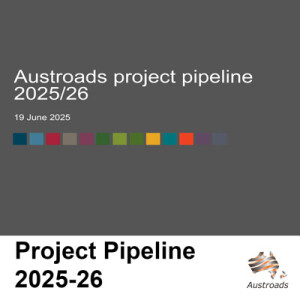
Thursday Jun 19, 2025
Austroads Project Pipeline 2025-26
Thursday Jun 19, 2025
Thursday Jun 19, 2025
Are you looking for an opportunity to work with Austroads to help Australian and New Zealand transport agencies deliver efficient, reliable, and safe mobility to their customers?
This webinar introduced new projects lined up for the 2025-26 financial year. Consultants interested in tendering for Austroads projects will find this session beneficial.
The session covered the Austroads tendering process with presentations from Austroads program managers:
- Ross Guppy, Program Manager Transport Infrastructure
- Michael Nieuwesteeg, Program Manager Road Safety and Design
- Amy Naulls, Program Manager Transport Network Operations
- Joanne Vanselow, Program Manager Vehicles and Technology, and Environment and Sustainability
This webinar was moderated by Paul Davies, General Manager Research, Guidance and Practice.

Thursday Jun 05, 2025
Review of specialty harnesses and vests used by children and young people
Thursday Jun 05, 2025
Thursday Jun 05, 2025
In this webinar, MACA Chief Executive Helen Lindner and Professor Julie Brown discuss an Austroads project for Australia and New Zealand investigating specialty harnesses and vests. These products are sometimes used by children and young people with disabilities and medical conditions when travelling in motor vehicles.
The project aimed to improve knowledge and understanding of why these products are used, how people are accessing them, their compatibility with different vehicle types, and their design and safety. In the webinar, the presenters outline the project aims, methodology, key findings, expert safety recommendations and next steps.
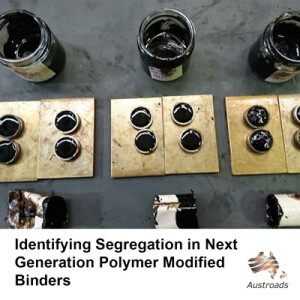
Thursday May 29, 2025
Identifying Segregation in Next Generation Polymer Modified Binders
Thursday May 29, 2025
Thursday May 29, 2025
Polymer modified binders (PMBs) are used in road construction to provide better performance than unmodified bitumen. As these materials consist of multiple components (i.e. bitumen, polymer and performance additives) the different components in a PMB can separate out, or segregate, when PMBs are stored hot before use in road construction.
The Australian PMB specification (Austroads ATS 3110) currently includes segregation tests (ATM 108) to determine whether the components in a PMB will segregate during hot storage. ATM 108 tests were developed considering current generation PMBs containing a single polymer type, but may provide misleading results if they are used to characterise next generation PMBs containing multiple polymer types. This webinar will summarise the outcomes of an Austroads project which developed a new segregation test (ATM 104) which is suitable for use with both current and next generation PMBs.
The webinar covered:
- Issues with the current ATM 108 test for characterising PMBs containing multiple polymer types
- The learnings obtained from a literature review of Australian and overseas segregation tests which were used to develop a suitable test to characterise the segregation properties of current and next generation PMBs
- The results of laboratory studies which investigated the sensitivity of the new test to segregation in current and next generation PMBs.
The webinar was presented by Dr Robert Urquhart and Robert Busuttil, who also answered attendee questions during the session.

Thursday Apr 17, 2025
Keeping People Safe When Walking: Stream 1 - Data Evidence and Interventions
Thursday Apr 17, 2025
Thursday Apr 17, 2025
Pedestrian safety is a critical concern worldwide, and some countries have been particularly successful. Sweden, Norway, the Netherlands, and Denmark have achieved 40-60 per cent reductions in pedestrian deaths over the last 20 years. Australia and New Zealand, however, lag and pedestrian safety is only marginally improving.
Achieving Australia and New Zealand’s vision for road safety, where no one is killed or seriously injured, will be challenging for pedestrian safety without a shift in our current approach. The Keeping People Safe When Walking: Stream 1 project found that comprehensive implementation of known interventions could reduce pedestrian fatalities and serious injuries in Australia and New Zealand by 70-90 per cent.
The webinar covered:
- pedestrian safety risk priorities
- priorities to improve the data needed to support investment in pedestrian safety
- strategies and interventions to progress Vision Zero for pedestrian safety
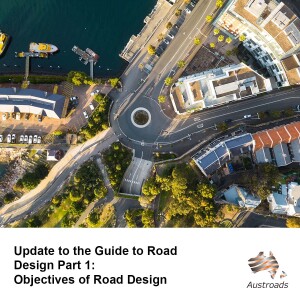
Friday Apr 04, 2025
Austroads Guide to Road Design Part 1: Objectives of Road Design
Friday Apr 04, 2025
Friday Apr 04, 2025
The purpose of the update to Guide to Road Design Part 1: Objectives of Road Design is to outline a proposed recommendation of amendments to the design domain and design exception process sections. The need for updating these sections is consistent with increasing industry challenges in designing and constructing road infrastructure in constrained environments or other various contexts, which make it impractical or impossible to adopt design solutions traditionally deemed as acceptable or normal practice.
Across Australia and New Zealand, many jurisdictions have their own guidelines in place to assist designers and practitioners in developing context sensitive design solutions, which may require the introduction of elements which depart from the design standards. These guidelines include processes for analysing risk and identifying risk mitigation strategies and are generally similar between jurisdictions.
In developing a proposed guideline for inclusion into Part 1, a systematic methodology was developed, planned and implemented which consisted of a literature review and stakeholder engagement.
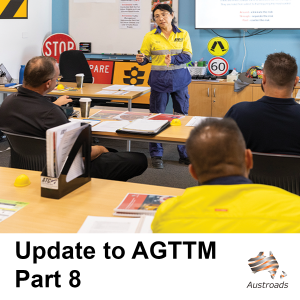
Friday Apr 04, 2025
Update to Guide to Temporary Traffic Management Part 8
Friday Apr 04, 2025
Friday Apr 04, 2025
The National Training Framework for Temporary Traffic Management has been operational since January 2024 and has been implemented by South Australia, Victoria, Northern Territory and Tasmania. The Austroads Guide to Temporary Traffic Management (AGTTM) provides comprehensive guidance for the planning, design, and implementation of safe and efficient temporary traffic management practices in Australia and New Zealand. Substantial revisions have been made within AGTTM Part 8 relating to the national harmonisation of training associated with temporary traffic management. The purpose of updated content within AGTTM Part 8 is to bring the guide in line with National Harmonisation of Temporary Traffic Management, which includes the National Training Framework.
AGTTM Part 8 has been reviewed and updated to reflect Austroads members' agreed operational policy position on the Training Framework, RTO Approval Framework and Prequalification Scheme. These processes comply with a harmonised approach to work, health and safety requirements, and relevant training and educational requirements. Additional changes have been made to reflect industry best practices, clarify content, and address terminology consistently. This webinar was presented by Point8’s Rosie Toohey and Peter Bilton.
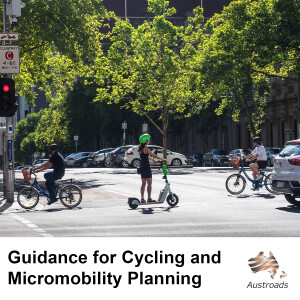
Monday Mar 31, 2025
Guidance for Cycling and Micromobility Planning
Monday Mar 31, 2025
Monday Mar 31, 2025
This webinar introduced the new Austroads Guidance for Cycling and Micromobility Planning, a resource for professionals seeking to deliver safer outcomes for all road users. The project aimed to deliver a consolidated and nationally consistent approach to cycling and micromobility planning and includes recommended changes to the Austroads Guide to Traffic Management.
The webinar shared the key themes that emerged from research and consultation. It introduced the three overarching recommendations of the Guidance: providing stronger links to best-practice cycle planning and design principles; recognising that considered terminology can help deliver projects; and updating the AGTM's scope to include wider micromobility options. Recommendations are supported with practical tools and strategies to facilitate better cycling and micromobility planning outcomes. The webinar was presented by Clare Huggins and James Laing, and moderated by Mary Haverland.

Thursday Mar 06, 2025
Thursday Mar 06, 2025
Australia’s freight industry is at a turning point. The transition to low and zero-emission heavy vehicles (ZEHVs) is critical to achieving net zero targets, but it presents significant challenges for road infrastructure. As these vehicles are often heavier than their diesel counterparts, they place additional strain on pavements and bridges—potentially increasing maintenance costs and accelerating road deterioration.
Australia has a long history of engineering cost-effective road networks, enabling an extensive transport system despite the country’s vast geography and relatively low population density. However, as transport emissions come under greater scrutiny, government and industry leaders must navigate complex trade-offs between sustainability, infrastructure resilience, and freight efficiency.
The report, Zero Emission Heavy Vehicles and Road Pavements: Comparing Australia and New Zealand to Europe and North America, explores these challenges and outlines potential pathways for government and industry to support the decarbonisation of heavy transport while ensuring Australia’s road network remains functional and cost-effective.

Thursday Dec 19, 2024
Improving the Sustainability of Sprayed Seals
Thursday Dec 19, 2024
Thursday Dec 19, 2024
Sprayed seals are a widely used, critical component of the road system in Australia and New Zealand, being the predominant type of sealed road surfacing in both countries. Traditional sprayed sealing practice sees a heavy reliance on non-renewable, virgin materials for the two major components, the bituminous binder, which is refined from crude oil, and aggregate, which is extracted from a quarry.
Austroads has recently completed a project to gather knowledge and increase the understandings about sprayed seal technologies and practices that can be used to improve their sustainability in terms of environmental impact. The project report has identified several opportunities that may be pursued to improve the sustainability of sprayed seals.
This webinar discussed the findings of the project and provided an overview of the report, which contains:
- a literature review, conducted to identify and evaluate new and emerging environmentally friendly, sustainable technologies and practices, and innovative materials and methods for sprayed seals
- a description of current sprayed seal materials and practice
- alternative approaches to binders (including additives, emulsions and bio-binders), aggregates and precoating, cutter oils, and construction equipment.
The session also focused on the lifespans of sprayed seals, impacts of climate change and an environmental life cycle analysis to review the impact of different sealing approaches. The webinar was presented by Steve Patrick and Robert Busuttil. There were question and answer opportunities during the session.

